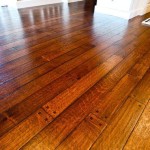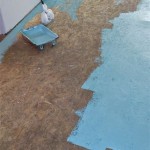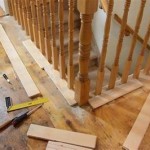Teak Hardwood Flooring in Bathrooms: A Comprehensive Guide
The incorporation of wood flooring into bathroom design has gained traction in recent years, offering a warmer, more luxurious alternative to traditional tile and stone. Among the various hardwood options available, teak stands out as a particularly suitable choice for bathroom environments. This article explores the properties of teak hardwood, its advantages and disadvantages in bathroom applications, installation best practices, maintenance requirements, and comparisons to other flooring materials.
Teak (Tectona grandis) is a tropical hardwood species native to Southeast Asia. Known for its exceptional durability, water resistance, and aesthetic appeal, teak has been a prized material for shipbuilding, outdoor furniture, and high-end flooring for centuries. Its natural oils and high density contribute to its resistance to rot, decay, and insect infestation, making it a relatively low-maintenance option compared to other wood types.
Key Advantages of Teak Flooring in Bathrooms
The suitability of teak for bathroom flooring hinges on a number of key advantages that distinguish it from other hardwood options, and even some non-wood alternatives. These advantages relate to its inherent material properties and its capacity to withstand the challenging conditions typically found in bathrooms.
Superior Water Resistance: Teak's naturally high oil content is the primary reason for its exceptional water resistance. These oils act as a natural sealant, preventing water from penetrating the wood fibers and causing warping, swelling, or rotting. This characteristic is crucial in bathrooms, where exposure to moisture is frequent and prolonged.
While no wood flooring is entirely waterproof, teak's resistance to water damage significantly reduces the risk of issues commonly associated with hardwood in humid environments. With proper installation and maintenance, teak flooring can withstand the fluctuating humidity levels and occasional spills that are inevitable in bathrooms.
Durability and Longevity: Teak is a dense and robust hardwood, capable of withstanding heavy foot traffic and the daily wear and tear of a bathroom environment. Its strength and stability contribute to its longevity, making it a worthwhile investment for homeowners seeking a durable and long-lasting flooring solution.
Unlike softer woods that are prone to denting and scratching, teak maintains its structural integrity and aesthetic appeal over time. This resilience ensures that the flooring retains its beauty and functionality for many years, reducing the need for frequent repairs or replacements. This durability extends to its resistance to fungal growth and insect damage, further prolonging its lifespan.
Aesthetic Appeal: Teak's rich, golden-brown color and distinctive grain patterns contribute to its timeless elegance and visual appeal. The warm tones of teak flooring create a welcoming and luxurious atmosphere in the bathroom, enhancing the overall aesthetic of the space.
Teak's natural beauty complements a wide range of design styles, from traditional to contemporary. Its organic texture adds a touch of sophistication and warmth to the bathroom, creating a spa-like ambiance. Furthermore, teak's color deepens and enriches over time, adding to its character and visual interest.
Potential Drawbacks of Teak Flooring in Bathrooms
Despite its advantages, teak flooring is not without potential drawbacks. Understanding these limitations is essential for making an informed decision about its suitability for a particular bathroom project. These considerations relate to cost, maintenance, and environmental factors.
High Cost: Teak is a premium hardwood, and its price reflects its rarity, durability, and aesthetic qualities. The cost of teak flooring can be significantly higher than that of other hardwood options or alternative flooring materials such as ceramic tile or vinyl.
The higher upfront investment may be a deterrent for some homeowners. However, it is important to consider the long-term value and durability of teak flooring, which can offset the initial cost over time. Furthermore, the enhanced aesthetic appeal and increased property value can contribute to a return on investment.
Maintenance Requirements: While teak is relatively low-maintenance, it still requires routine cleaning and care to preserve its appearance and prevent water damage. Regular sweeping or vacuuming is necessary to remove dirt and debris, and occasional damp mopping with a pH-neutral cleaner is recommended to maintain its cleanliness.
It is crucial to avoid harsh chemicals or abrasive cleaners, as these can damage the finish and dull the wood's natural luster. Furthermore, sealing or oiling the teak flooring periodically can help to replenish its natural oils and enhance its water resistance. Proper ventilation is also important to prevent excessive moisture buildup in the bathroom.
Environmental Concerns: Sourcing teak from sustainable and responsible sources is essential to mitigate the environmental impact of its harvesting. Unsustainable logging practices can contribute to deforestation and habitat loss, which can have detrimental consequences for the environment.
It is important to choose teak flooring from suppliers who are certified by reputable organizations such as the Forest Stewardship Council (FSC). FSC certification ensures that the teak is harvested from responsibly managed forests that adhere to strict environmental and social standards. Making informed purchasing decisions can help to promote sustainable forestry practices and minimize the environmental footprint of teak flooring.
Installation and Maintenance Best Practices
Proper installation and ongoing maintenance are crucial for ensuring the longevity and performance of teak flooring in bathrooms. Adhering to best practices during the installation process and implementing a regular maintenance routine can help to prevent water damage, maintain its aesthetic appeal, and maximize its lifespan.
Professional Installation: Installing teak flooring in a bathroom is a specialized task that requires expertise and attention to detail. It is highly recommended to hire a professional flooring installer with experience in working with hardwood flooring, particularly in moisture-prone environments.
A professional installer will ensure that the subfloor is properly prepared, leveled, and sealed to prevent moisture from seeping up from below. They will also use appropriate adhesives and fastening methods to secure the teak planks or tiles to the subfloor, ensuring a stable and watertight installation. Furthermore, they will apply a high-quality sealant or finish to protect the teak from water damage and enhance its durability.
Proper Ventilation: Adequate ventilation is essential for maintaining a dry and healthy bathroom environment. Installing a high-quality exhaust fan can help to remove excess moisture and humidity, preventing it from damaging the teak flooring. It is important to run the exhaust fan during and after showers or baths to evacuate steam and moisture.
Opening windows or doors to allow for natural ventilation can also help to reduce humidity levels in the bathroom. Good airflow promotes evaporation and prevents the buildup of moisture that can lead to mold and mildew growth. In addition, consider using a dehumidifier if the bathroom is prone to high humidity levels, particularly during certain times of the year.
Regular Cleaning and Sealing: Regular cleaning and sealing are necessary to maintain the appearance and water resistance of teak flooring. Sweep or vacuum the floor regularly to remove dirt, dust, and debris. Wipe up spills immediately to prevent them from soaking into the wood.
Use a pH-neutral cleaner specifically designed for hardwood floors to clean the teak flooring. Avoid using harsh chemicals, abrasive cleaners, or excessive amounts of water, as these can damage the finish and warp the wood. Periodically apply a sealant or oil formulated for teak to replenish its natural oils and enhance its water repellency. Follow the manufacturer's instructions for application and frequency of sealing.
In summary, teak hardwood flooring offers a compelling option for bathrooms due to its inherent water resistance, durability, and aesthetic appeal. While it presents a higher initial cost compared to some alternatives, its longevity and enhanced bathroom ambiance can provide long-term value. Careful consideration of installation and maintenance practices, alongside responsible sourcing, are vital for maximizing the benefits of teak flooring in this demanding environment. Careful selection from reputable suppliers, proper installation, and consistent maintenance will ensure that the teak flooring remains a beautiful and functional element within bathroom design for extended periods.

Teak In The Bathroom

Teak Floor In Bathroom Flooring Sustainable Interior Design

Teak Shower Floor Transform Your Bathroom Into An Exotic Space

Teak Shower Floor Transform Your Bathroom Into An Exotic Space

Teak Shower Floor Transform Your Bathroom Into An Exotic Space

Custom Teak Wood Shower Floors Carib Fine Lumber

Teak Shower Floors 3a Design Studio

La Design Construction Pro Tips Expert Remodeling Contractor Advice

Custom Teak Wood Shower Floors Carib Fine Lumber

18 Knockout Ideas For Wooden Floor Showers
Related Posts








